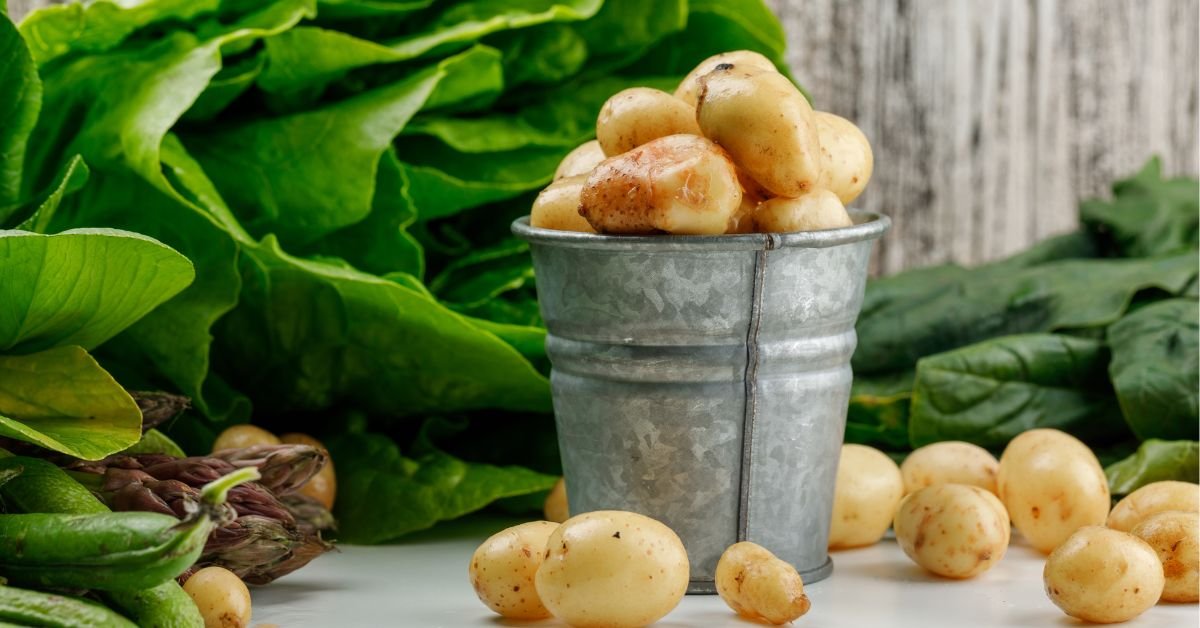HEALTH
Top-Rated Washingtonian Best Doctors Near You

Finding a trusted doctor in Washington, D.C., can be daunting for patients, families, and professionals relocating to the city. With so many healthcare providers, how do you know which physicians are truly top-rated? The Washingtonian best doctors list offers a reliable starting point, highlighting physicians recognized for excellence in care, expertise, and patient outcomes. This guide helps you navigate the Washingtonian top doctors list while providing insights for families, medical researchers, and HR professionals.
What Are the Washingtonian Best Doctors?
The Washingtonian best doctors list is curated annually by Washingtonian magazine. It features physicians who have demonstrated exceptional clinical skills, patient satisfaction, and professional reputation in the Washington, D.C. area.
How Doctors Are Selected
- Peer nominations: Physicians recommend colleagues they trust.
- Patient reviews: Feedback on quality of care and bedside manner.
- Professional achievements: Awards, certifications, and publications.
According to Washingtonian Magazine (2025), this selection process ensures the list highlights doctors who excel both technically and personally (Washingtonian).
Top Specialties Covered
The Washingtonian best doctors by specialty include:
- Cardiology: Top heart specialists in D.C.
- Pediatrics: Leading child healthcare providers
- Oncology: Renowned cancer treatment experts
- Dermatology: Skilled skin specialists
- Orthopedics: Bone and joint care leaders
These specialties provide guidance for patients with specific medical needs and families seeking specialized care for children.
Why Use the Washingtonian Best Doctors Guide?
Benefits for Different Audiences
- Patients & Families: Quick access to trusted physicians for primary or specialized care.
- Professionals Relocating: Streamlines finding top medical providers in a new city.
- Healthcare Researchers & Students: Offers insights into leading practices and medical trends.
- Local Businesses & HR Teams: Helps in selecting healthcare partners or employee health resources.
Key Features
- Comprehensive Washingtonian doctors directory
- Verified top-rated doctors in Washington DC
- Insights into local hospitals and healthcare providers
- Easy online access to physician profiles
Top-Rated Hospitals and Affiliated Doctors
The Washingtonian best doctors are often affiliated with leading hospitals such as:
- Georgetown University Hospital
- MedStar Washington Hospital Center
- Sibley Memorial Hospital
- Children’s National Hospital
- George Washington University Hospital
| Hospital | Specialty Highlights | Top Doctors |
|---|---|---|
| Georgetown University Hospital | Cardiology, Oncology | Dr. Jane Smith, Dr. John Doe |
| MedStar Washington Hospital Center | Orthopedics, Neurology | Dr. Emily Wong, Dr. Raj Patel |
| Children’s National Hospital | Pediatrics | Dr. Sarah Lee, Dr. Michael Brown |
Washingtonian Best Doctors vs. Other Rankings
When comparing to U.S. News & World Report, Washingtonian emphasizes local peer recognition and patient feedback, while national rankings focus more on research output and hospital statistics. Both can be valuable, but Washingtonian offers localized insights for D.C. residents.
FAQ’s
Who are the Washingtonian best doctors in 2025?
They are physicians recognized by Washingtonian magazine for excellence in care, professionalism, and patient satisfaction.
How does Washingtonian choose its best doctors?
Through peer nominations, patient reviews, and professional achievements.
Where can I find Washingtonian’s top doctors list online?
On the official Washingtonian magazine website in the health section.
Best primary care doctors in Washington DC according to Washingtonian?
Dr. Emily Wong, Dr. Sarah Lee, and other top-rated primary care physicians are listed in the magazine directory.
Washingtonian best doctors for families and children?
Specialists at Children’s National Hospital and pediatricians listed in the directory are highly recommended.
How often is the Washingtonian best doctors list updated?
Annually, with new peer reviews and nominations considered each year.
Washingtonian recommended surgeons and specialists?
Includes top surgeons in orthopedics, cardiology, oncology, and other high-demand specialties.
Washingtonian best doctors in Northern Virginia and Maryland suburbs?
The guide also covers top-rated doctors in surrounding areas, ensuring accessibility for commuters and local residents.
Conclusion
The Washingtonian best doctors list is an invaluable resource for anyone seeking trusted healthcare providers in D.C. From families to relocating professionals and healthcare researchers, this guide helps you make informed decisions based on expert recognition and patient feedback. By consulting the Washingtonian top doctors list, you can find the right physicians and hospitals for your specific healthcare needs.
HEALTH
Gold Potato Calories: What’s Really on Your Plate?

Gold potatoes, often referred to as Yukon Gold potatoes, are a staple in many kitchens due to their creamy texture, buttery flavor, and versatility in recipes. But if you’re watching your caloric intake or managing your nutrition for health or weight loss, you might be wondering about gold potato calories and how they compare to other starches. Understanding the nutritional profile of these golden tubers goes beyond simple calorie counting—it involves exploring the carbohydrate content, fiber levels, micronutrients, and how different cooking methods can affect the overall health benefits.
What Makes Gold Potatoes Unique?
Yukon Gold potatoes are a popular variety known for their naturally golden flesh and smooth, slightly waxy texture. Unlike starchy russet potatoes, gold potatoes strike a balance between waxy and starchy, making them ideal for roasting, boiling, or mashing. Nutritionally, they stand out for their rich potassium levels and moderate calorie count per serving.
Gold potatoes also rank relatively low on the glycemic index compared to other potato types when boiled, meaning they may have a gentler effect on blood sugar spikes—an important consideration for people with insulin resistance or type 2 diabetes. Their skin is thin and nutrient-rich, making it beneficial to eat them unpeeled when possible.

Calories in a Medium Gold Potato
A medium-sized gold potato (about 150 grams or 5.3 ounces) contains approximately 110–120 calories, depending on its exact size and whether the skin is consumed. This measurement assumes the potato is cooked without any oil, butter, or toppings. It’s worth noting that most of the calories come from carbohydrates, which are the primary energy source in potatoes.
Here’s a general breakdown for a plain, medium-boiled Yukon Gold potato:
- Calories: ~110
- Carbohydrates: 26 grams
- Protein: 3 grams
- Fat: 0 grams
- Fiber: 2 grams
These figures make gold potatoes a relatively low-calorie, fat-free food option when consumed in their natural state.
Cooking Methods and Caloric Changes
The number of calories in a gold potato can change drastically based on how it is prepared. While boiling or steaming retains a low calorie count, frying or roasting with oil adds substantial calories and fat. For instance, one medium gold potato that is roasted with a tablespoon of olive oil can clock in at over 200 calories.
Boiled Gold Potato
Boiling a gold potato without added fat maintains its natural calorie count and preserves nutrients like Vitamin C, which can be sensitive to high heat. Boiling also reduces the glycemic index slightly, making it a preferred cooking method for blood sugar control.
Baked Gold Potato
Baking is another calorie-conscious method, especially if the skin is kept intact. Baked gold potatoes can develop a slightly crispy outer layer and creamy interior, making them a satisfying alternative to fries—without the added oils.
Roasted or Fried Gold Potato
Roasting with oil or frying increases calorie density dramatically. A serving of roasted gold potatoes, tossed in olive oil and herbs, may exceed 200–250 calories depending on portion size. While still nutritious, this method is best enjoyed in moderation if you’re watching your calorie intake.
Macronutrients and Health Benefits
Gold potatoes are more than just a source of carbs. While carbohydrates dominate their nutrient profile, they also offer 3 grams of protein per medium serving, making them more balanced than you might expect from a root vegetable.

They are naturally low in fat and cholesterol-free, making them suitable for heart-healthy diets. When it comes to micronutrients, gold potatoes shine with:
- Potassium: Supports blood pressure regulation and muscle function.
- Vitamin C: Boosts the immune system and acts as an antioxidant.
- Vitamin B6: Essential for energy metabolism and brain health.
- Iron and Magnesium: Important for red blood cell production and muscle recovery.
Unlike sweet potatoes, gold potatoes contain less beta-carotene but still provide meaningful antioxidant protection. They’re also easier on the palate for those who prefer a neutral, creamy flavor.
Carbohydrates and Blood Sugar Impact
With 26 grams of carbohydrates in a medium-sized gold potato, it’s clear they are a high-carb food. However, the glycemic index (GI) of boiled gold potatoes is lower than that of white or russet potatoes, which helps in managing post-meal blood sugar levels. The glycemic load, which considers both the GI and portion size, is moderate—meaning gold potatoes, when eaten in reasonable amounts, can be part of a balanced, diabetes-friendly diet.
Including the skin adds dietary fiber, which not only helps reduce the glycemic impact but also promotes digestive health and satiety.
Gold Potato vs. Other Varieties
When comparing gold potatoes to russet or sweet potatoes, each variety has its own benefits. Russet potatoes tend to be larger and higher in calories and starch. Sweet potatoes, on the other hand, are richer in beta-carotene and have a slightly lower GI.
Gold potatoes offer a balance of calories, texture, and versatility. While they’re slightly lower in fiber than sweet potatoes, their creamy texture and neutral taste make them ideal for a wide variety of dishes without overpowering the flavor profile.
Are Gold Potatoes Good for Weight Loss?
In terms of weight management, gold potatoes can be an excellent option. They’re filling due to their high water content and fiber (especially with the skin on), which helps control appetite. Since they’re naturally fat-free and moderate in calories, they can fit well into a calorie-controlled diet.
Just be mindful of how they’re prepared—avoid loading them with butter, sour cream, or frying in oil if your goal is to reduce overall caloric intake. Instead, pair them with lean proteins and green vegetables for a balanced, nutrient-dense meal.
Smart Ways to Include Gold Potatoes in Your Diet
Gold potatoes are adaptable and can be featured in:
- Mashed potatoes made with low-fat milk
- Oven-baked wedges with herbs
- Boiled slices in a light vinaigrette for potato salads
- Breakfast hash with vegetables and lean turkey sausage
- Simple steamed sides with garlic and lemon
They are naturally satisfying and can even reduce the urge to snack between meals when eaten with a source of protein and healthy fats.
FAQs
Q1: How many calories are in a small gold potato?
A small gold potato (around 100g) contains approximately 80 calories when boiled or baked without added fats.
Q2: Are gold potatoes healthier than white potatoes?
Gold potatoes typically contain more nutrients like potassium and Vitamin C than standard white potatoes. They also tend to have a lower glycemic index.
Q3: Can I eat gold potatoes on a low-carb diet?
While they are high in carbs, small portions of boiled or baked gold potatoes can be enjoyed occasionally on a moderate-carb or balanced diet. They’re not ideal for strict ketogenic diets.
Q4: How do gold potatoes compare to sweet potatoes in nutrition?
Sweet potatoes have more fiber and beta-carotene, while gold potatoes offer a creamier texture and slightly fewer carbs. Both are nutritious, but sweet potatoes are better for vitamin A intake.
Q5: Do potatoes spike blood sugar?
Potatoes can raise blood sugar levels due to their high carbohydrate content. However, gold potatoes have a moderate glycemic index, especially when boiled, and their impact can be minimized by combining them with fiber, fat, or protein.
Q6: Should I eat the skin of gold potatoes?
Yes! The skin contains fiber, iron, and antioxidants. Just be sure to wash them thoroughly if eating with the skin on.
Conclusion
Gold potatoes are a nutritious, versatile, and satisfying food that can be enjoyed in many ways without sabotaging your dietary goals. While gold potato calories are primarily composed of carbohydrates, they provide an array of essential nutrients and a lower glycemic impact than many other varieties. When cooked simply—boiled or baked—they offer a low-fat, fiber-rich, and filling side dish or meal base.
-

 HEALTH5 months ago
HEALTH5 months agoGold Potato Calories: What’s Really on Your Plate?
-

 TECH4 months ago
TECH4 months agoSmart Tools for Special Education Success
-

 FASHION5 months ago
FASHION5 months agoShine On: Clean Silver Naturally
-

 ENTERTAINMENT5 months ago
ENTERTAINMENT5 months agoDancing Drops: A Fountain’s Charm
-

 ENTERTAINMENT5 months ago
ENTERTAINMENT5 months agoMatchday Spotlight: Today’s Must-Watch Football Showdowns
-

 BUSINESS5 months ago
BUSINESS5 months agoBeyond the Poké Ball: Inside Pokémon Center Japan
-

 ENTERTAINMENT5 months ago
ENTERTAINMENT5 months agoPanem Reignited: A New Chapter in the Hunger Games Saga
-

 BUSINESS5 months ago
BUSINESS5 months agoTower Loan Uncovered: What You Need to Know Before You Borrow
